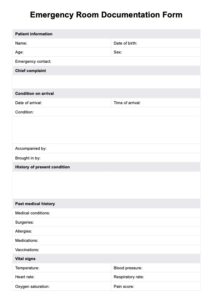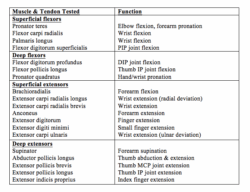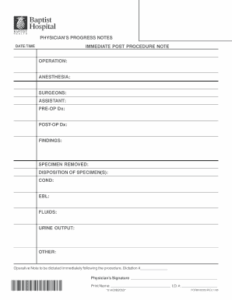Ever feel like you’re drowning in paperwork while trying to provide the best possible care to your patients? You’re definitely not alone. The world of medicine is filled with complex procedures, each requiring detailed documentation to ensure patient safety, legal compliance, and smooth communication between healthcare professionals. Creating these documents from scratch every time can be incredibly time-consuming and prone to errors. That’s where a well designed medical procedure documentation template comes in handy, offering a structured framework to streamline the entire process.
Think of it as a pre built roadmap for recording crucial information before, during, and after a medical intervention. It’s not just about filling out forms; it’s about creating a comprehensive record that supports informed decision making, minimizes risks, and ensures accountability. A solid template guides you through the essential elements to capture, from patient demographics and pre operative assessments to intra operative observations and post operative instructions.
So, if you’re looking to improve efficiency, reduce errors, and ultimately enhance patient care, then a medical procedure documentation template might be just what you need. Let’s delve deeper into the benefits and essential components of these valuable tools and how they can transform your practice.
Why a Standardized Medical Procedure Documentation Template is Essential
In the fast paced environment of healthcare, consistency and accuracy are paramount. A standardized medical procedure documentation template provides a consistent framework for all members of the healthcare team to follow, ensuring that critical information is captured in a uniform manner. This eliminates ambiguity, reduces the risk of miscommunication, and promotes a shared understanding of the patient’s condition and the procedure performed.
Beyond consistency, a well designed template promotes thoroughness. It prompts clinicians to consider all relevant aspects of the procedure, from pre operative preparation to potential complications and post operative care. This comprehensive approach minimizes the risk of overlooking important details and helps to ensure that all necessary steps are taken to provide the best possible care. Missing just one small detail can have big repercussions for patient health and safety, so a template becomes a vital safety net.
Moreover, templates play a vital role in legal and regulatory compliance. Accurate and complete documentation is essential for demonstrating adherence to established standards of care and for protecting healthcare providers from potential liability. A well structured template ensures that all required information is documented, providing a clear audit trail of the procedure and the decision making process. This is especially crucial in today’s litigious environment.
The beauty of using a medical procedure documentation template extends beyond just filling in the blanks. It allows for data driven insights. By collecting structured data across multiple procedures, you can identify trends, track outcomes, and improve the quality of care. This data can be used to refine protocols, optimize resource allocation, and ultimately enhance patient outcomes. Imagine being able to analyze data to identify areas where procedures could be made safer and more efficient.
Finally, let’s not forget the efficiency gains. Templates significantly reduce the time spent on documentation, freeing up clinicians to focus on patient care. Instead of starting from scratch each time, they can simply populate the template with the relevant information, saving valuable time and reducing administrative burden. This improved efficiency can lead to a better work life balance for medical professionals.
Key Elements of a Comprehensive Medical Procedure Documentation Template
A robust medical procedure documentation template is more than just a form; it’s a comprehensive tool that guides the documentation process and ensures that all critical information is captured. While the specific elements may vary depending on the type of procedure, there are some core components that should be included in every template. Let’s break down the essential building blocks.
First and foremost, patient identification is crucial. The template should include fields for the patient’s name, date of birth, medical record number, and any other relevant identifiers. This ensures that the documentation is accurately associated with the correct patient and avoids any potential mix ups. This seems obvious, but it’s a critical starting point.
Next, detailed information about the procedure itself is paramount. This includes the name of the procedure, the date and time it was performed, the indication for the procedure, and the names of all healthcare professionals involved. The template should also include a section for documenting the specific steps taken during the procedure, any equipment used, and any complications encountered. The more detailed this section, the better the record.
Pre operative assessment is another key component. The template should include fields for documenting the patient’s medical history, allergies, medications, and any relevant physical examination findings. This information helps to identify potential risks and ensure that the patient is appropriately prepared for the procedure. It’s also important to document informed consent, confirming that the patient understands the risks and benefits of the procedure and has agreed to proceed.
Intra operative observations are also vital. During the procedure, it’s important to document any significant events or findings, such as changes in vital signs, unexpected anatomical variations, or any complications that arise. The template should include fields for recording these observations in real time, providing a clear picture of the procedure as it unfolds. This section may include details on anesthesia used, fluid balance, and any medications administered during the procedure.
Finally, post operative instructions and follow up plans must be clearly documented. The template should include fields for recording any post operative orders, medications, and activity restrictions. It should also specify the date and time of the next follow up appointment and any specific instructions for the patient to follow at home. This ensures that the patient receives appropriate care after the procedure and that any potential complications are promptly addressed.
Using a standardized approach helps make processes more efficient for medical staff. It creates a structure of consistency that everyone can follow and rely on.
By having a system in place, patients can have more confidence and feel safer with the care they are receiving.



